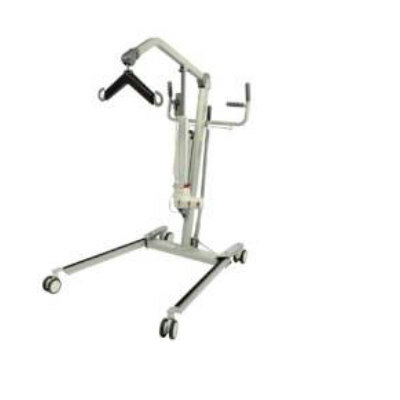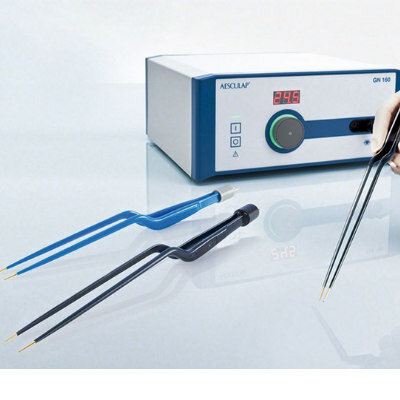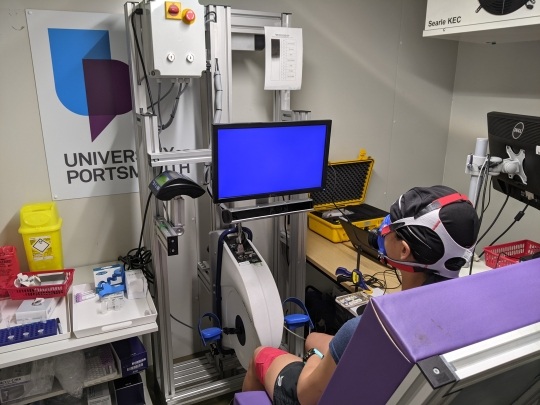Minimally Invasive Robot Places Flexible, Steerable Catheter in Live Brain
|
By HospiMedica International staff writers Posted on 24 Oct 2022 |
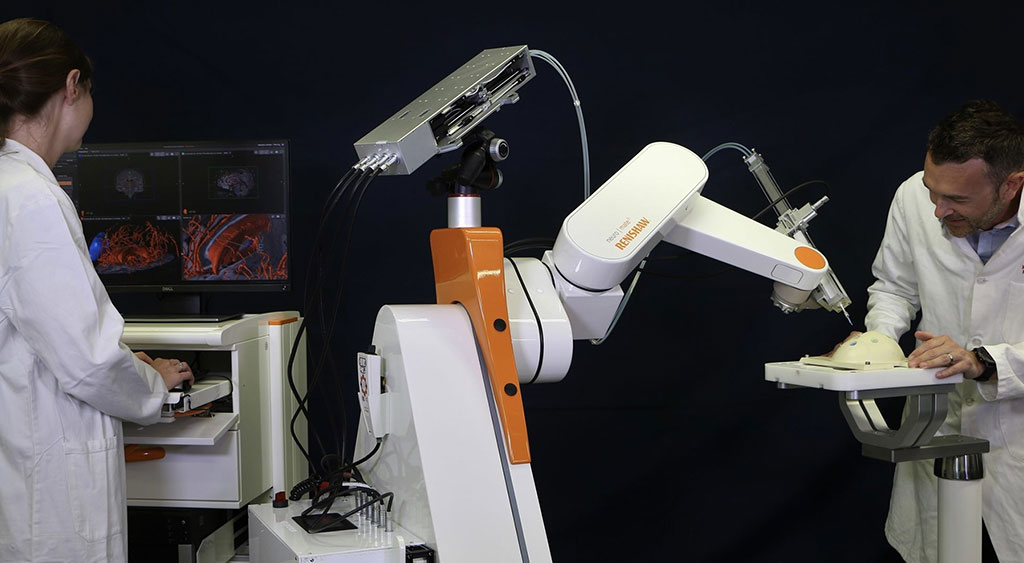
While performing minimally invasive surgery on the brain, surgeons use deeply penetrating catheters to diagnose and treat disease. However, currently used catheters are rigid and difficult to place precisely without the aid of robotic navigational tools. The inflexibility of the catheters combined with the intricate, delicate structure of the brain means catheters can be difficult to place precisely, which brings risks to this type of surgery. Now, scientists have successfully placed a bioinspired steerable catheter into the brain of an animal for the first time. The early-stage research tested the delivery and safety of the new implantable catheter design in two sheep to determine its potential for use in diagnosing and treating diseases in the brain. If proven effective and safe for use in people, the platform could simplify and reduce the risks associated with diagnosing and treating disease in the deep, delicate recesses of the brain. It could help surgeons to see deeper into the brain to diagnose disease, deliver treatment like drugs and laser ablation more precisely to tumors, and better deploy electrodes for deep brain stimulation in conditions such as Parkinson’s and epilepsy.
The platform developed by scientists at Imperial College London (London, UK) improves on existing minimally invasive, or 'keyhole', surgery, where surgeons deploy tiny cameras and catheters through small incisions in the body. It includes a soft, flexible catheter to avoid damaging brain tissue while delivering treatment, and an artificial intelligence (AI)-enabled robotic arm to help surgeons navigate the catheter through brain tissue. Inspired by the organs used by parasitic wasps to stealthily lay eggs in tree, bark, the catheter consists of four interlocking segments that slide over one another to allow for flexible navigation.
It connects to a robotic platform that combines human input and machine learning to carefully steer the catheter to the disease site. Surgeons then deliver optical fibers via the catheter so they can see and navigate the tip along brain tissue via joystick control. The AI platform learns from the surgeon’s input and contact forces within brain tissues to guide the catheter with pinpoint accuracy. Compared to traditional ‘open’ surgical techniques, the new approach could eventually help to reduce tissue damage during surgery, and improve patient recovery times and length of post-operative hospital stays.
To test their platform, the researchers deployed the catheter in the brains of two live sheep which were given pain relief and monitored for 24 hours a day over a week for signs of pain or distress before being euthanized so that researchers could examine the structural impact of the catheter on brain tissue. They found no signs of suffering, tissue damage, or infection following catheter implantation.
“Our new precise, minimally invasive platform improves on currently available technology and could enhance our ability to safely and effectively diagnose and treat diseases in people, if proven to be safe and effective,” said senior author Professor Ferdinando Rodriguez y Baena, of Imperial’s Department of Mechanical Engineering.
“Our findings could have major implications for minimally invasive, robotically delivered brain surgery,” added lead author Dr. Riccardo Secoli, also from Imperial’s Department of Mechanical Engineering. “We hope it will help to improve the safety and effectiveness of current neurosurgical procedures where precise deployment of treatment and diagnostic systems is required, for instance in the context of localized gene therapy.”
Related Links:
Imperial College London
Latest Surgical Techniques News
- LED-Based Imaging System Could Transform Cancer Detection in Endoscopy
- New Surgical Microscope Offers Precise 3D Imaging Using 48 Tiny Cameras
- First-Of-Its-Kind Drug Illuminates Nerve Tissue for Faster and Safer Surgery
- Neuroform Atlas Stent-Assisted Coiling Found Effective Even in Smaller Arteries
- New Surgical Technique Safely Removes Giant Nerve Tumors
- Breakthrough Polymer Significantly Improves Safety of Implantable Medical Devices
- First-Ever Technology Makes Blood Translucent During Surgery
- Tibia Nailing System with Novel Side-Specific Nails to Revolutionize Fracture Surgery
- New Imaging Probe to Transform Brain Cancer Surgery
- New Technology More Than Doubles Success Rate for Blood Clot Removal
- Surgical Ablation During CABG Improves Survival in Patients with Preexisting Atrial Fibrillation
- New Battery Technology Delivers Additional Power to Implantable Medical Devices

- New Model Reveals Optimal Positioning of Orthopedic Screws in Fractures
- Non-Invasive Tool for Removing Lung Cancer Tumors Reduces Surgical Trauma
- Advanced Imaging Endoscopes to Revolutionize Detection and Treatment of Gastrointestinal Disorders
- Novel Mechanical Heart Valve Improves Blood Flow and Lowers Risk of Blood Clots
Channels
Critical Care
view channel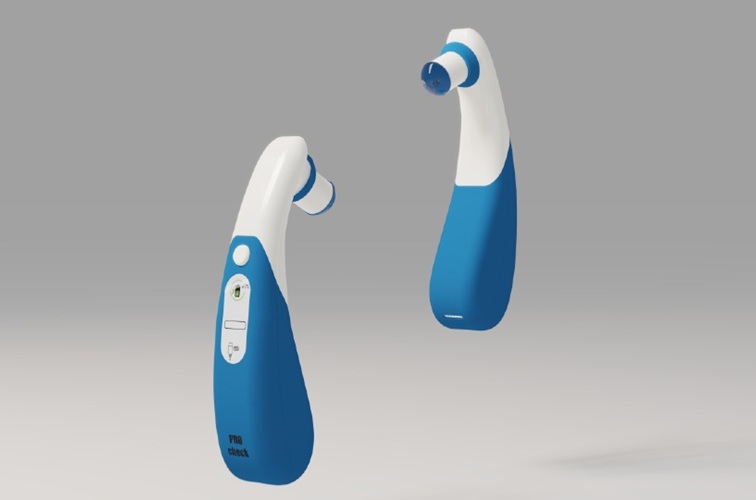
New Prostate Screening Device Could Replace Traditional Examination Method
Prostate cancer is a leading health concern, with one in seven men being diagnosed with the disease. Early detection is critical for improving patient outcomes, but traditional diagnostic methods, such... Read more
Adaptive Spine Board to Revolutionize ER Transport
Prolonged immobilization during transport, such as in combat zones or emergency rescues, poses a life-threatening risk for patients, particularly from pressure injuries. Pressure injuries, also known as... Read morePatient Care
view channel
Revolutionary Automatic IV-Line Flushing Device to Enhance Infusion Care
More than 80% of in-hospital patients receive intravenous (IV) therapy. Every dose of IV medicine delivered in a small volume (<250 mL) infusion bag should be followed by subsequent flushing to ensure... Read more
VR Training Tool Combats Contamination of Portable Medical Equipment
Healthcare-associated infections (HAIs) impact one in every 31 patients, cause nearly 100,000 deaths each year, and cost USD 28.4 billion in direct medical expenses. Notably, up to 75% of these infections... Read more
Portable Biosensor Platform to Reduce Hospital-Acquired Infections
Approximately 4 million patients in the European Union acquire healthcare-associated infections (HAIs) or nosocomial infections each year, with around 37,000 deaths directly resulting from these infections,... Read moreFirst-Of-Its-Kind Portable Germicidal Light Technology Disinfects High-Touch Clinical Surfaces in Seconds
Reducing healthcare-acquired infections (HAIs) remains a pressing issue within global healthcare systems. In the United States alone, 1.7 million patients contract HAIs annually, leading to approximately... Read moreHealth IT
view channel
Printable Molecule-Selective Nanoparticles Enable Mass Production of Wearable Biosensors
The future of medicine is likely to focus on the personalization of healthcare—understanding exactly what an individual requires and delivering the appropriate combination of nutrients, metabolites, and... Read more
Smartwatches Could Detect Congestive Heart Failure
Diagnosing congestive heart failure (CHF) typically requires expensive and time-consuming imaging techniques like echocardiography, also known as cardiac ultrasound. Previously, detecting CHF by analyzing... Read moreBusiness
view channel
Bayer and Broad Institute Extend Research Collaboration to Develop New Cardiovascular Therapies
A research collaboration will focus on the joint discovery of novel therapeutic approaches based on findings in human genomics research related to cardiovascular diseases. Bayer (Berlin, Germany) and... Read more








